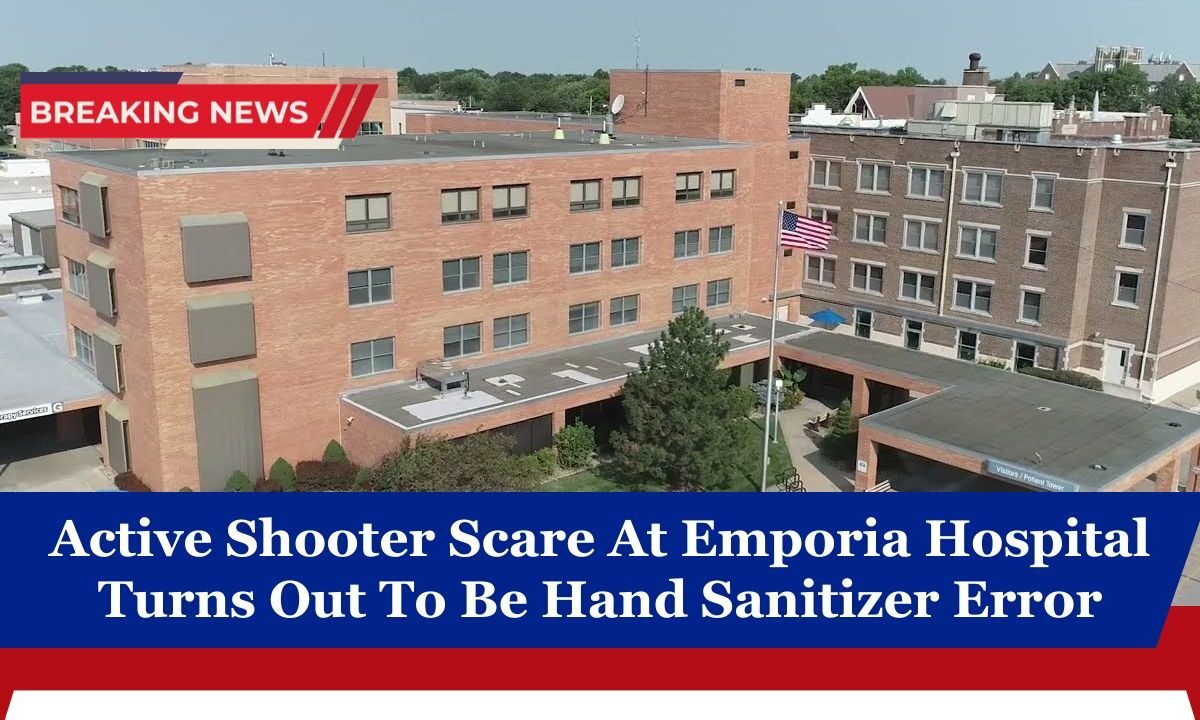What began as a normal Thursday afternoon at Newman Regional Health in Emporia quickly turned into panic when the hospital’s active shooter alarm blared, triggering lockdown protocols and an overwhelming law enforcement response.
Patients, staff, and nearby Emporia State University students braced for the worst as alerts went out across the city.
Within hours, however, officials confirmed the truth: there was no gunman. The frightening ordeal was caused by a simple mistake — a hand sanitizer dispenser installation that accidentally set off the system.
Timeline of the Incident
| Time | Event |
|---|---|
| ~4:20 p.m. | Active shooter alarm activated at Newman Regional Health |
| 4:25 p.m. | Emporia State University issues “Run, Hide, Fight” alerts to students |
| 4:30 p.m. | Hospital staff initiate lockdown, alarms sound throughout the building |
| 4:35 p.m. | First police units arrive within 2 minutes of call |
| 5:00–6:30 p.m. | Full sweep of hospital conducted by multiple agencies |
| ~7:00 p.m. | Officials confirm no threat and lift lockdown |
How a Hand Sanitizer Triggered Chaos
The scare began when a third-party vendor installed new hand sanitizer dispensers. One dispenser was placed just inches from an alarm sensor. During the process, it created a trouble signal that was misinterpreted as an active shooter activation.
Hospital leadership decided to enact full active shooter protocol out of caution, a move that proved disruptive but reinforced the seriousness with which these alarms are taken.
Rapid Emergency Response
The hospital’s emergency systems immediately activated:
- Lockdown initiated: All doors secured, overhead alarms sounded, and communication systems instructed staff and patients to shelter in place.
- Law enforcement response: Within two minutes, eight officers arrived, followed by dozens more from surrounding agencies, overwhelming the scene with support.
- Systematic sweep: Police methodically searched the hospital floor by floor, ensuring no threat was present before giving the all-clear.
By the time the situation was resolved, the hospital had effectively carried out a real-world drill, showing both the strengths and areas needing improvement in current protocols.
Human Impact of the False Alarm
For staff, patients, and visitors inside the hospital, the experience was terrifying. Many described messaging loved ones, preparing to hide, or wondering whether it was a drill or a real attack.
Some staff members spent over an hour in lockdown, waiting for word from authorities. Even though the event turned out to be a mistake, the psychological toll was real — which is why the hospital has arranged counseling services for those affected.
Lessons Learned and Next Steps
While the situation was a false alarm, officials emphasized the importance of using it as a learning opportunity.
- Protocol review: The hospital and local police are meeting to update procedures, refine communication, and improve coordination.
- Vendor safety checks: Contractors working near sensitive systems will now undergo stricter oversight to prevent accidental activations.
- Preparedness validation: The response demonstrated how quickly and effectively law enforcement can mobilize during emergencies.
Why Preparedness Matters
Active shooter preparedness has become a critical part of hospital and campus safety planning nationwide. While no one wants to face these situations, drills and protocols ensure staff and law enforcement are ready to respond instantly.
In Emporia’s case, although there was never an actual threat, the swift response highlighted both readiness and resilience.
The active shooter scare at Emporia’s Newman Regional Health was ultimately nothing more than a hand sanitizer installation gone wrong, but for those caught in the moment, it felt very real.
With alarms blaring, police swarming the building, and patients huddled in fear, the incident showed just how disruptive and emotionally draining even a false alarm can be.
In the aftermath, hospital leaders and law enforcement are committed to strengthening protocols to ensure clearer communication and prevent similar mishaps in the future.
While the scare ended in relief, it also reinforced the importance of constant vigilance and preparedness




